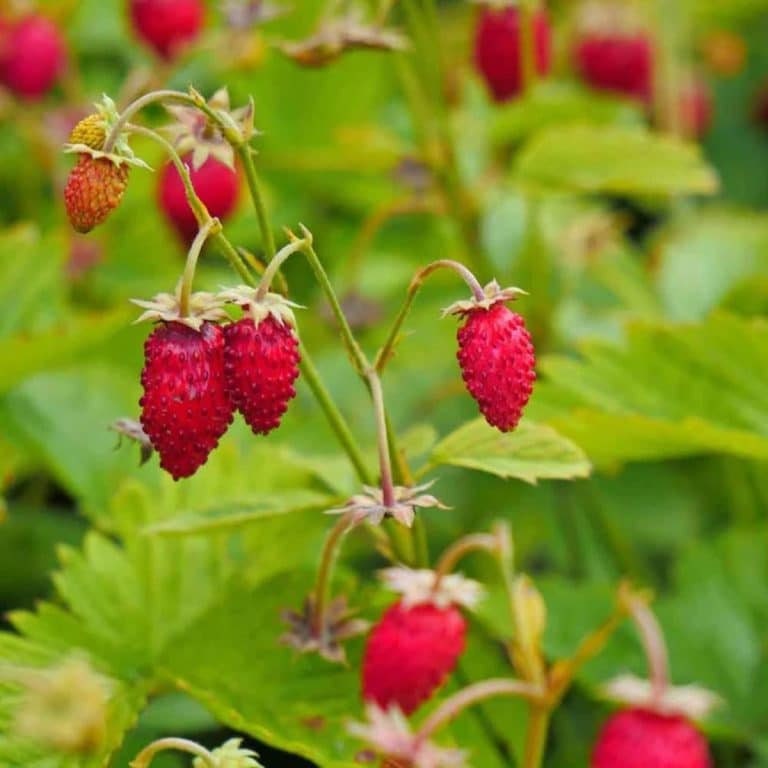Growing Strawberry Alexandria from Seeds
Strawberries are delicious and versatile fruits that can be easily grown from seeds, including the delightful Strawberry Alexandria variety. This comprehensive guide will help you cultivate organic Strawberry Alexandria strawberries from seeds. You can find high-quality Strawberry Alexandria seeds and all the gardening supplies you need at your local garden center or conveniently order them online from www.ezyseeds.com.
About Strawberry Alexandria:
Strawberry Alexandria is a delightful and aromatic variety known for its sweet, juicy berries. These berries are perfect for fresh eating, desserts, jams, and more. When you choose to grow Strawberry Alexandria from seeds, you're in for a treat.
USDA Hardiness Zones:
Strawberries can thrive in different USDA Hardiness Zones depending on the variety. Strawberry Alexandria does well in Zones 3-9. Determine your zone to ensure it's suitable for growing this variety.
Selecting Strawberry Alexandria Seeds from www.ezyseeds.com:
1. Variety: Choose Strawberry Alexandria seeds from a reputable source or nursery.
2. Quality: Ensure you select high-quality seeds that are suitable for your climate and growing conditions.
3. Quantity: Plan how many Strawberry Alexandria plants you want to grow. It's a good practice to plant multiple strawberry plants for better cross-pollination and a higher yield of delicious berries.
Germination:
1. Seed Scarification: Strawberry Alexandria seeds have a hard outer coat. To aid germination, gently rub the seeds with sandpaper or a file, creating small abrasions on the seed coat. This allows moisture to penetrate and speeds up the germination process.
2. Cold Stratification: To break dormancy, Strawberry Alexandria seeds require a period of cold stratification. Place the scarified seeds in a plastic bag with slightly damp peat moss or vermiculite. Seal the bag and refrigerate it for 4-6 weeks.
Sowing Strawberry Alexandria Seeds:
1. Seed Bed Preparation: Prepare a well-draining potting mix with a neutral pH. You can use a mix of peat moss, perlite, and vermiculite.
2. Planting: Plant the scarified Strawberry Alexandria seeds in seed trays or small pots. Sow them just below the surface, about 1/4 inch deep.
3. Moisture and Cover: Keep the soil consistently moist but not waterlogged. You can cover the containers with plastic wrap or a clear plastic lid to maintain humidity.
4. Temperature and Light: Place the containers in a warm location with indirect sunlight. A consistent temperature around 70°F (21°C) is ideal for germination.
Transplanting:
1. Seedling Growth: When the Strawberry Alexandria seedlings reach 2-3 inches in height and have developed several true leaves, they are ready for transplanting.
2. Select a Growing Location: Choose a sunny spot in your garden or a large container for your strawberry plants. Ensure the soil is well-draining and rich in organic matter.
3. Plant Spacing: Space the Strawberry Alexandria plants at least 12 inches apart. This allows them room to grow and ensures good air circulation.
4. Soil Preparation: Prepare the planting holes by adding compost or well-rotted manure to enrich the soil.
5. Planting: Gently remove the seedlings from their containers, being careful not to damage the roots. Place them in the prepared holes, ensuring the crown (where the stem meets the roots) is at soil level.
6. Watering: Water your newly transplanted Strawberry Alexandria plants thoroughly to settle the soil and ensure good root-to-soil contact.
7. Mulching: Apply a layer of mulch around the plants to retain moisture, suppress weeds, and keep the strawberries clean and off the soil.
Care and Maintenance:
1. Watering: Keep the soil consistently moist throughout the growing season. Strawberries require regular watering, especially during dry spells.
2. Fertilization: Apply a balanced, slow-release fertilizer designed for strawberries or use a general-purpose fertilizer with equal parts nitrogen, phosphorus, and potassium.
3. Pest and Disease Management: Monitor your Strawberry Alexandria plants for common pests like aphids and slugs. Implement appropriate pest control measures if needed. Additionally, watch for signs of diseases such as powdery mildew and take prompt action to prevent their spread.
4. Pruning: Regularly remove any yellowing or damaged leaves and spent flowers to encourage healthy growth and fruit production.
5. Protecting from Birds: Birds love ripe strawberries. Consider using bird netting or other bird deterrents to protect your crop.
Harvesting:
1. Patience is Key: Allow your Strawberry Alexandria plants to establish themselves during the first growing season. While they may produce some fruit, it's best to wait until the second year for a full harvest.
2. Ripe Berries: Harvest your strawberries when they are fully ripe. They should be uniformly red, plump, and easily detach from the stem when gently pulled.
3. Harvesting Method: Grasp the strawberry near the stem and pull gently to avoid damaging the fruit. Alternatively, you can use scissors or pruning shears
to snip the stem.
4. Enjoy Your Bounty: Freshly picked Strawberry Alexandria strawberries are a delight. Enjoy them on their own, in salads, desserts, or make delicious preserves.
By following these steps, you can successfully grow delicious Strawberry Alexandria strawberries in your garden. Enjoy the fresh, homegrown taste of these delightful berries, and don't forget to visit [www.ezyseeds.com](http://www.ezyseeds.com) for all your gardening needs.
